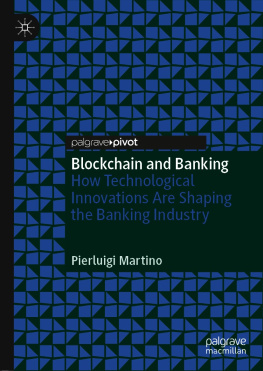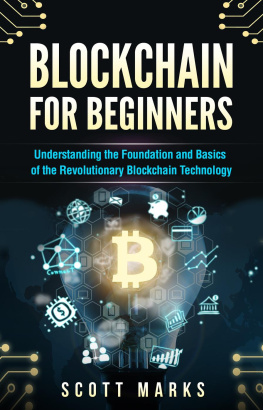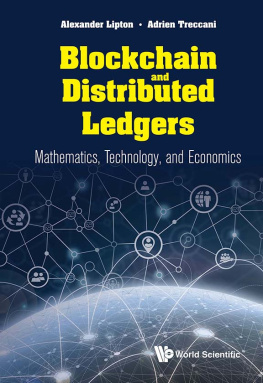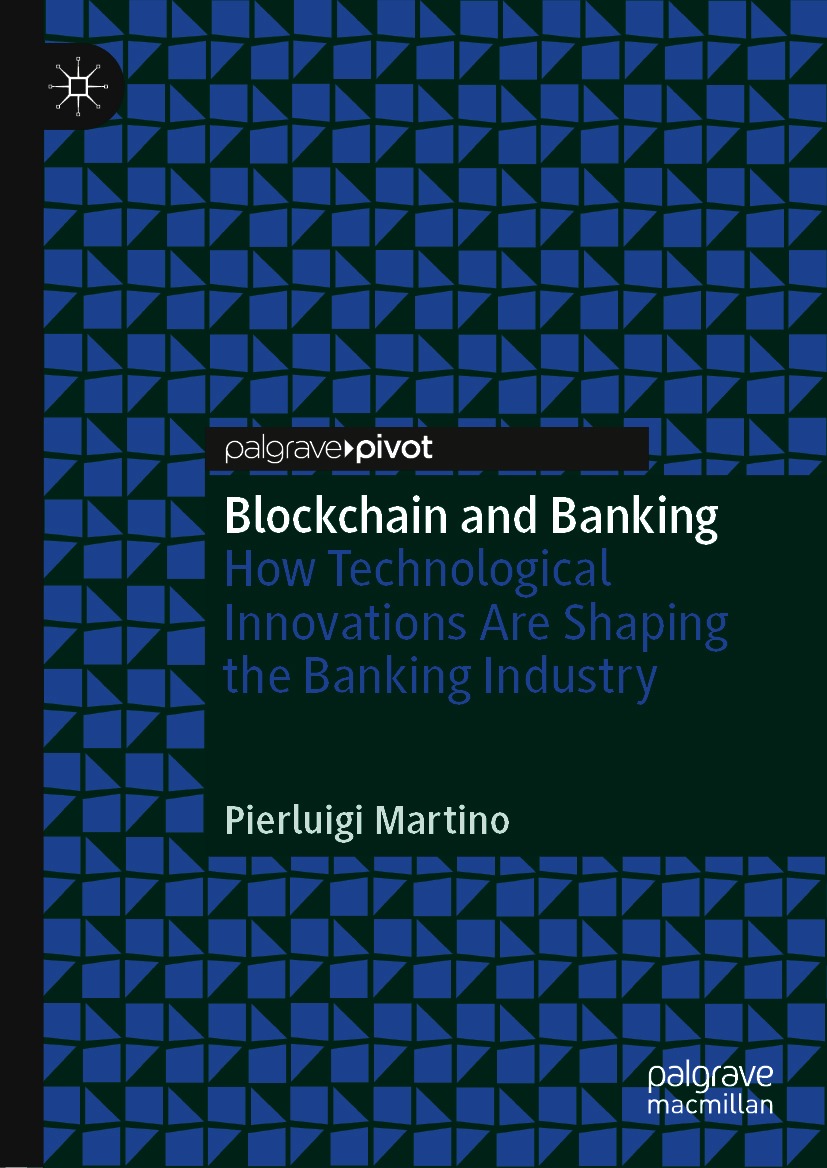Pierluigi Martino - Blockchain and Banking: How Technological Innovations Are Shaping the Banking Industry
Here you can read online Pierluigi Martino - Blockchain and Banking: How Technological Innovations Are Shaping the Banking Industry full text of the book (entire story) in english for free. Download pdf and epub, get meaning, cover and reviews about this ebook. year: 2021, publisher: Palgrave Pivot, genre: Romance novel. Description of the work, (preface) as well as reviews are available. Best literature library LitArk.com created for fans of good reading and offers a wide selection of genres:
Romance novel
Science fiction
Adventure
Detective
Science
History
Home and family
Prose
Art
Politics
Computer
Non-fiction
Religion
Business
Children
Humor
Choose a favorite category and find really read worthwhile books. Enjoy immersion in the world of imagination, feel the emotions of the characters or learn something new for yourself, make an fascinating discovery.
- Book:Blockchain and Banking: How Technological Innovations Are Shaping the Banking Industry
- Author:
- Publisher:Palgrave Pivot
- Genre:
- Year:2021
- Rating:5 / 5
- Favourites:Add to favourites
- Your mark:
Blockchain and Banking: How Technological Innovations Are Shaping the Banking Industry: summary, description and annotation
We offer to read an annotation, description, summary or preface (depends on what the author of the book "Blockchain and Banking: How Technological Innovations Are Shaping the Banking Industry" wrote himself). If you haven't found the necessary information about the book — write in the comments, we will try to find it.
This book explores blockchain technologys impact on banks, particularly how blockchain technology can create new opportunities for banks and poses new threats to their business. The digital revolution in the banking industry, whose customers are increasingly adapting to new technologies and new types of competitors and solutions arising in the space, has had a significant impact on the banking industry over the past few years, requiring banks to substantially rethink their business models and strategies in order to cope with these developments. The rise of blockchains distributed ledger technology (DLT) has also played an important role since it has the potential to change the whole banking industry in faster and more disruptive ways than ever before.
Born as the technology underlying Bitcoin, which has been used to allow the recording of cryptocurrencies transactions, blockchain can facilitate the process of recording any transaction type and track the movement of any asset, finding application in many different areas. Specifically, it has been acknowledged as a disruptive force in the financial sector and a key source of future financial market innovation with the potential to reshape existing business models in the financial services industry.
Regarding the banking industry in particular, existing literature suggests that blockchain poses new challenges and generates opportunities as well as threats. This is pushing banks to rethink their operations, business models and strategies. However, literature in this regard is still in its infancy, and we do not yet have a clear understanding of blockchain technologys potential implications for banks. This book expands the literature on blockchain technology in banking by providing new insights into the developments, trends and challenges of blockchain in the banking industry. In particular, sheds more light on the implications of blockchain technology for banks by discussing the advantages and disadvantages related to this technology and exploring its potential impact on traditional banking business models.
Pierluigi Martino: author's other books
Who wrote Blockchain and Banking: How Technological Innovations Are Shaping the Banking Industry? Find out the surname, the name of the author of the book and a list of all author's works by series.








![Tiana Laurence [Tiana Laurence] - Blockchain For Dummies](/uploads/posts/book/119706/thumbs/tiana-laurence-tiana-laurence-blockchain-for.jpg)

